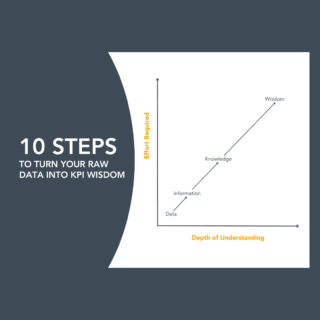Challenge: you feel your last approach to strategic planning accomplished some shorter-term goals, but the organization struggled to keep the plan alive. You want to do something differently this time round, but you are not sure what.
Tip 1: Diagnose your past planning challenges
For those of you about to embark on a new planning cycle, take time to evaluate your past planning process and experiences. Encourage the senior leadership team to enter the conversation without judgment: Ask “what worked well last time?” , “what didn’t work as well as we had hoped?” and “what would success look like this time round? How would it be different?”
In my experience, two things commonly come up: (1) We need better measurement and (2) We spend too much time talking about “what we do?” and not “Why we do it”.
When measurement comes up, here is a handy tool that will help your leadership team more deeply explore their measurement challenges. The PuMP diagnostic tool helps you gauge how your performance measurement process is working and increase their curiosity about how to improve it.
Tip 2: Talk about ”Why” while you are planning
Most goals and objectives focus on what the organization needs to improve and are often written in language that is more confusing than clarifying (the infamous weasel words). So now, during your strategic planning process, elevate your strategic conversations by moving the discussion from what you want to improve or do, to discussing why you want to improve it and the result you want to achieve.
Write your result statement in as plain language as possible; don’t worry about having the perfect result – there is no such thing – get it 80% there. Know that when you want to move to making your strategy more measurable, you will still put it through PuMP’s measurability test:
- Is it a result or action?
- Are there any weasel words
- Is it multi-focus?
- Should, can, will we measure it?
- How does it align to strategy?
If you just finished your strategic plan, then I encourage you to pull your senior leaders together to translate your just-completed plan into results. Do it while the thoughts are still fresh from planning. Two benefits arise: the first is leaders start to discover where the planning has been clear and where the clarity gaps still exist and could create barriers to execution. The second is that you have taken your plan one step closer to being more measurable.
Tip 3: Get beyond “you can’t measure that”
Inevitably there is someone in the planning session who routinely interrupts a strategic conversation by saying “you can’t measure that” and then a very good topic or idea gets shut down. To avoid this happening, introduce the idea at the beginning of your planning that there exists a repeatable performance measurement process that allows an organization to take on any priority and find a way to meaningfully measure it.
Help them to understand that they are asking the question too early, and that first they have to determine what they want to achieve while in strategic conversations. If they are curious, organize an hour at another time to talk about the PuMP® 8-step performance measurement process.
Tip 4: Introduce PuMP® as a Plug’n Play into your planning process
If you just finished your strategic planning, you have the perfect opportunity to introduce PuMP® as a way to move to more meaningful measurement and to assist you with execution. If you use the Balanced Scorecard methodology, PuMP® is vital to your success. Though Balanced Scorecard is great at developing an executional road map, it still does not provide a repeatable process for coming up with a set of meaningful KPIs to form your scorecard. You commonly see the 8 bad habits of performance measurement scattered throughout Balanced Scorecard. PuMP® is the perfect Plug’n Play to develop your Balanced Scorecard measures over and over again!
PuMP® is more than a performance measurement process; it can fundamentally improve the outcomes of your strategic planning and the execution that follows.
Discussion:
What are your planning struggles?



